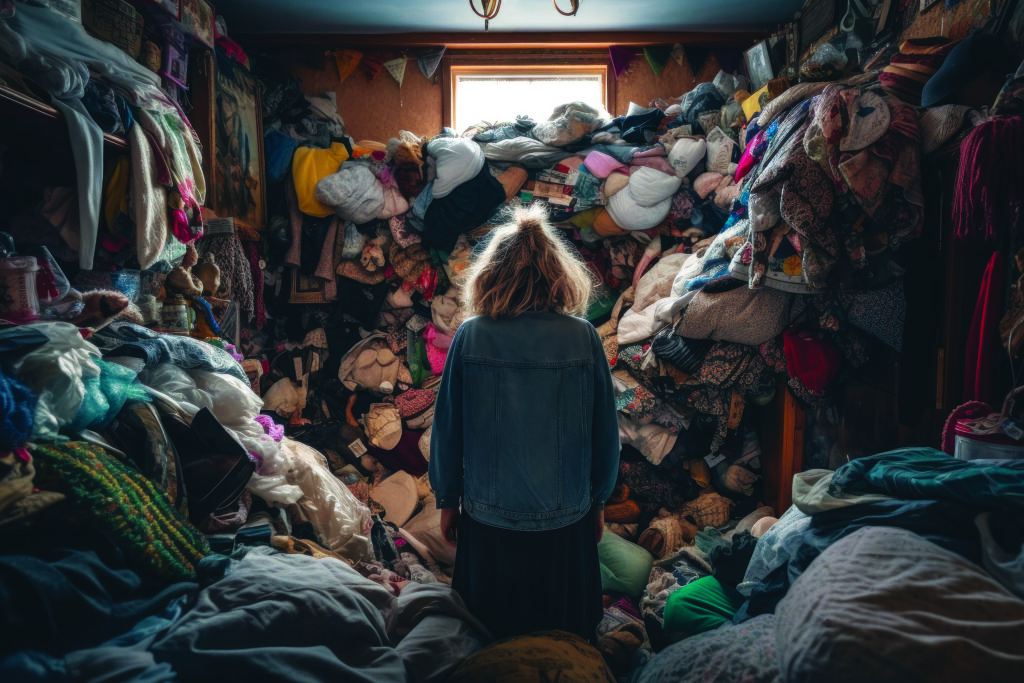
Features
Behavioural Sciences
Hoarding behaviour: Part 2
October 9, 2023 By Peter Collins
 Photo: soupstock / Adobe Stock
Photo: soupstock / Adobe Stock In the July/August 2023 column, we defined and discussed hoarding behaviour as a serious mental illness. In this column, I’ll be exploring how police officers can communicate with individuals who suffer from these behaviours.
In brief, hoarding behaviour is having difficulty discarding or parting with possessions, regardless of their value. The individual’s experience is the perceived need to save. The idea of and actual discarding of their possessions results in significant distress and impairment. Hoarding creates an accumulation of items that congests active living areas with potential safety concerns and possible dire outcomes.
As law enforcement officers, it’s important to be aware that close to 95 per cent of hoarders have cross-associated psychiatric disorders. The hoarding is evident, but the individual may also suffer from a major depression or anxiety disorder, obsessive compulsive disorder or social phobia. Some may experience executive function challenges that include problems with categorization, perception, decision making and prospective memory.
Prospective memory involves remembering to perform a planned action or recalling a planned intention at some future point. Examples of naturally occurring prospective memory tasks (intentions) are: remembering to take a medication; mail a birthday card; return a book to the library; or turn off the stove after cooking. There may also be some personality features, such as indecisiveness, excessively exacting standards, and getting “lost” in detail.
Addressing hoarding behaviour is a team approach that includes social services and support agencies as essential partners, using various team models. After assessing the severity of the situation, help can be sought from pre-established relationships, such as: housing authorities; public health; protective services (for children, vulnerable adults, and the elderly); social workers; medical professionals (e.g. the family physician, occupational therapists, Victoria Order of Nurses); animal control services; municipal building inspectors; and professional cleaners.
Available to clinical members of the team are several assessment tools:
- HOMES – Multi-Disciplinary Hoarding Risk Assessment
- The Clutter-Hoarding Scale
- The Clutter Image Rating Scale (CIRS)
The Clutter Image Rating Scale is a series of photographs in a grid pattern, three images wide and three images deep, totaling nine numbered images, showing different rooms in a home. The first image is a perfectly tidy space and each subsequent image has more clutter than the one prior. A clutter image scale one means perfectly tidy, whereas a clutter image scale nine means severely hoarded to a very dangerous level. When a homeowner, tenant, support worker or building manager is assessing the level of clutter, they will attempt to match the space to the photo that is the most similar. This requires some interpretation, but it is great starting point for discussion.
Addressing hoarding behaviour is a team approach that includes social services and support agencies as essential partners, using various team models.
For responding officers and EMS, severe hoarding may limit ready access into the residence. As discussed in part one of this column, the front door and other standard entries may be blocked. If a door is blocked from the outside, responders should check the other doors. In severe conditions, narrow passageways lead from an entrance to usable spaces, with piles of belongings lining both sides of the space which limits movement, especially if a stretcher is required.
To clear a path for access to the house, items may have to be moved, which could agitate the individual. There may be personal safety issues as a result of potential pathogens in the home, especially if animals are hoarded, so PPE and masks/respirators should always be worn.
Hoarding is treatable. The most common evidence-based treatment is cognitive behavioural therapy (CBT). This therapy focuses on changing thought patterns, emotions and behaviours associated with hoarding. It assists the subject to identify and challenge their distorted beliefs related to acquiring and saving possessions with the aim of developing alternate coping skills.
In conjunction with CBT, exposure therapy may also be used. This therapy involves gradually exposing individuals to anxiety-inducing situations related to discarding possessions, with a focus on preventing the saving behaviour. This can include shopping trips that are ‘acquisition free’ – accompanying the subject to various locations and not having them acquire anything. Exposure therapy will assist the subject to better tolerate stress and to learn that the anxiety will diminish over time.
Skills training is another important strategy that can help the individual to learn organization, decision-making and problem-solving skills. This would include building routines for sorting, categorizing and discarding items, skills that can help them better manage their possessions and prevent future clutter accumulation.
It’s recommended that only after coping skills are in place that supported cleanouts be attempted. A safety plan must be in place. This is a multi-agency endeavour that will include practitioners and a team of organizers. The goal is to organize, discard and donate items. Unlike the reality television shows, this is challenging and labour intensive.
Peter Collins is the operational forensic psychiatrist with the Ontario Provincial Police’s Criminal Behaviour Analysis Section. He is also a member of the crisis/hostage negotiation team of the Toronto Police Service Emergency Task Force. Dr. Collins’ opinions are his own. Contact him at peter.collins@utoronto.ca.
Print this page